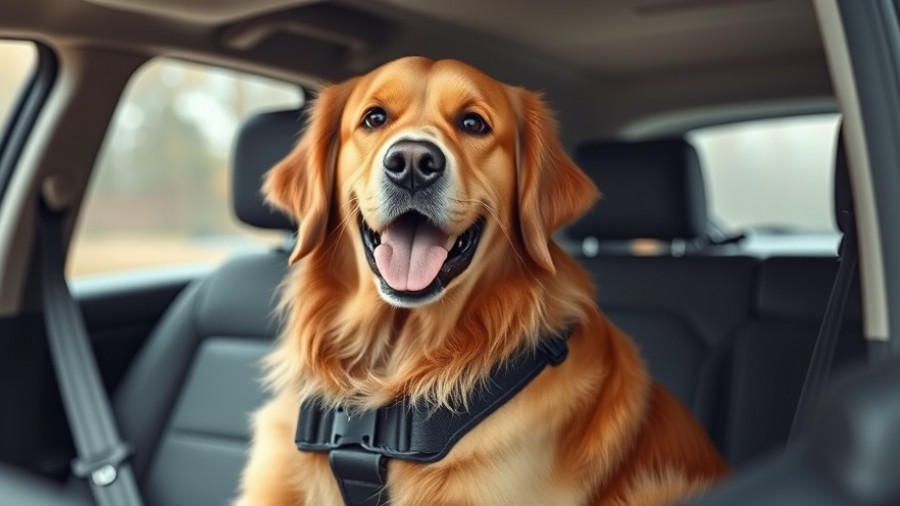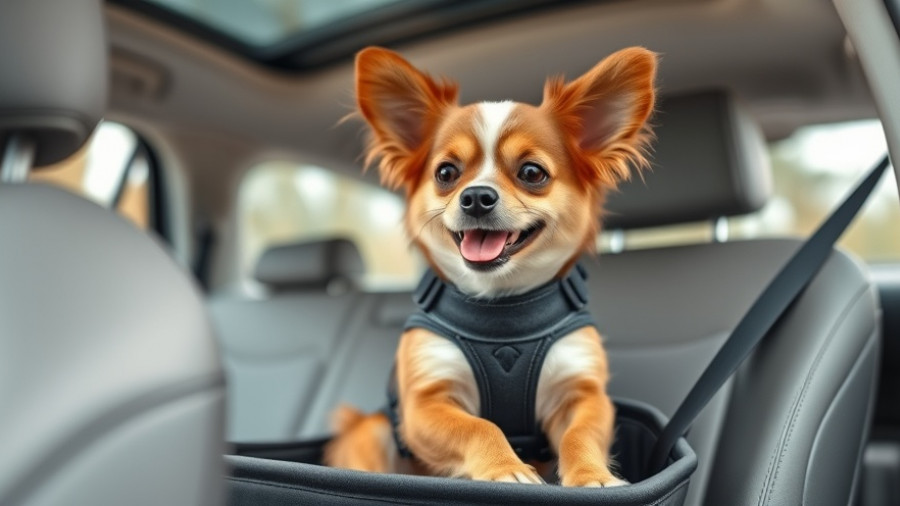
Why Safety Should Always Come First
As pet parents, ensuring the safety of our furry companions during car travels is non-negotiable. In the United States alone, over 100,000 pets suffer injuries in vehicular accidents each year. By utilizing a headrest car dog safety seatbelt, owners can significantly reduce their dog’s risk of serious injury in unexpected stops or collisions by up to 90%. This is especially crucial considering that many accidents stem from driver distractions caused by unsecured pets creating chaos in the vehicle.
Understanding Headrest Dog Safety Seatbelts
Headrest dog safety seatbelts can be a game-changer for effective pet travel. This innovative system either attaches directly to a vehicle’s headrest or uses a designated harness tethered into the seatbelt mechanism. According to studies from the Center for Pet Safety, such restraints can prevent your dog from becoming a lethal projectile during an accident, ensuring that everyone in the car is as safe as possible.
Types of Dog Seatbelt Systems: Choose Wisely
When it comes to selecting the right headrest safety seatbelt, understanding the different types can make all the difference:
- Tether-Based Systems: Preferable for dogs weighing 25 to 80 pounds, these systems utilize reinforced cables or straps that connect to a dog’s harness. Premium versions, like the Sleepypod Clickit Sport, are crash-test certified and provide enhanced safety features.
- Integrated Harness Models: These combine a restraint with a harness, simplifying usage. However, they can limit replacement options over time, making them better for occasional travel rather than everyday commuting.
- Quick-Release Mechanisms: Designed for emergencies, these allow for rapid disconnection but may compromise safety. For most dogs, standard locking mechanisms are a more effective safety option.
Weight and Size Matter
Choosing the right headrest dog safety seatbelt largely depends on your dog's weight. A simple breakdown is as follows:
- For dogs weighing 10-25 pounds, lightweight tether systems (with ratings of 800 pounds) are ideal.
- Dogs between 25-65 pounds require medium-duty systems rated for 1,500 pounds.
- Large dogs weighing over 65 pounds should use heavy-duty systems capable of withstanding 2,000 pounds of force.
Is your vehicle equipped with fixed headrests? Older cars may also limit the effectiveness of certain systems, so ensure compatibility with your specific model.
Local Laws and Regulations
Important to consider, many regions have laws governing pet restraints in vehicles. Ensuring that your pet is secured not only promotes safety but also adherence to legal requirements. In some states, unrestrained pets can lead to distracted driving charges, underscoring the need for reliable dog safety systems.
Practical Tips for Using Dog Safety Seatbelts
Proper installation and usage of your chosen seatbelt system are pivotal in ensuring effectiveness. Here are some practical tips:
- Fit is Key: Ensure the harness is snug enough that you can fit only two fingers between the dog’s body and the restraint.
- Gradual Introduction: Familiarize your dog with the harness at home to reduce anxiety during actual car rides.
- Emergency Preparedness: Keep emergency supplies ready for your pet to address any potential issues on the road.
Despite the challenges, the peace of mind that a reliable headrest safety seatbelt system brings is invaluable. As responsible pet owners, prioritizing safety sets a strong precedent for everyone on the road.
Invest in a quality headrest car dog safety seatbelt and enjoy the journey with your four-legged friend without worrying about their safety. Remember that a secure dog equals a happier and healthier traveling experience for everyone involved!
 Add Row
Add Row  Add
Add 




Write A Comment